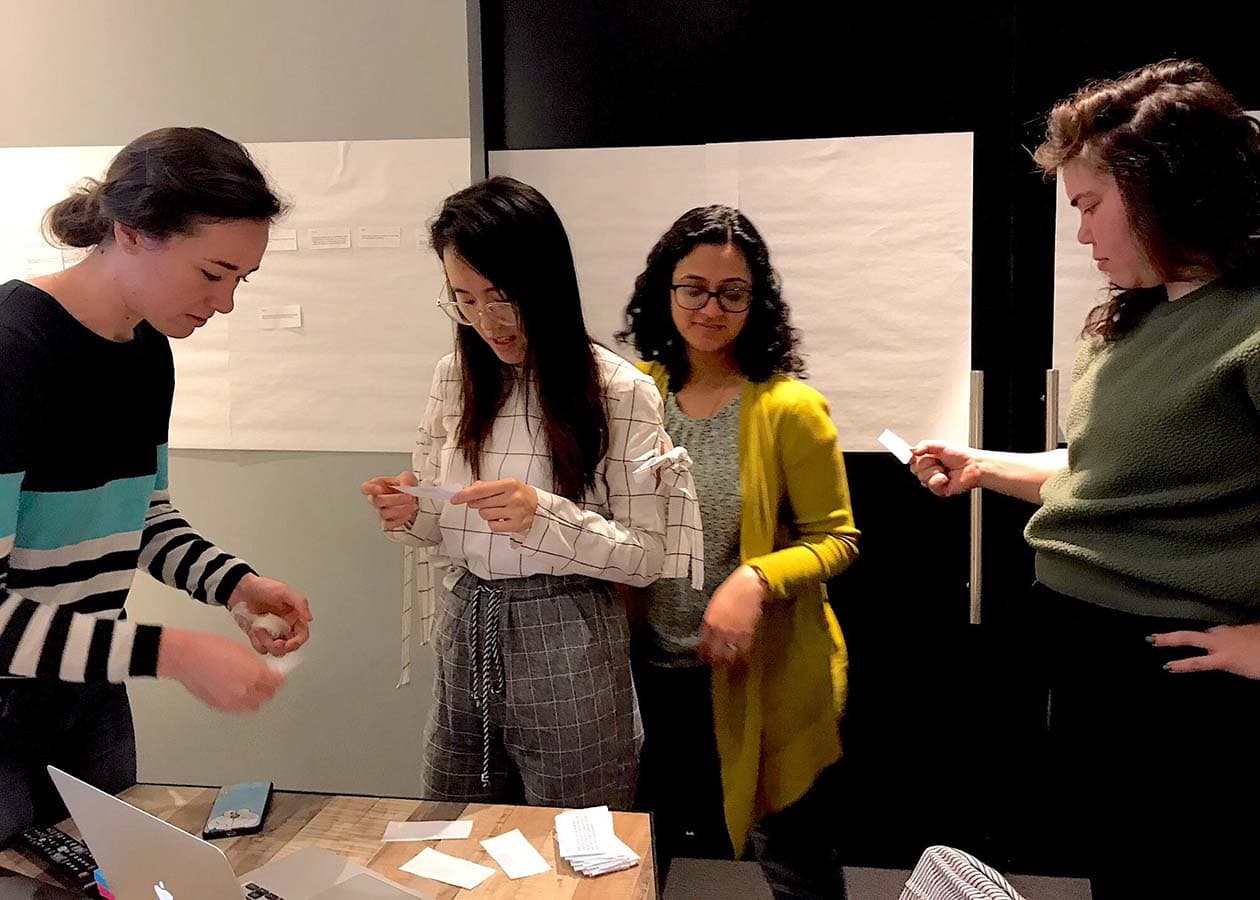
At EchoUser, we launched a professional development initiative to enhance our expertise. Deirdre Hirschtritt and I led sessions on Contextual Inquiry, focusing on industry applications, method adaptation, and stakeholder involvement. The hands-on activities and discussions helped our team refine their skills for upcoming generative projects.
At EchoUser, we pride ourselves on staying curious and constantly honing our craft. That’s why we launched a new professional development initiative at the beginning of this year, to continue learning new skills by sharing our expertise with each other. Deirdre Hirschtritt and I kicked off the series by tackling a favorite and feared method among researchers: Contextual Inquiry.
It was good timing because we had a number of generative research projects in the pipeline for clients spanning from enterprise software to public services. We wanted this to be more than just a refresher on the textbook basics of Contextual Inquiry; we wanted our coworkers to come away with some hands-on experience and ideas about how the method could fit into projects they are working on now.
Pros and Cons for Industry Applications
Deirdre and I came into planning these sessions knowing that textbook Contextual Inquiry is nearly impossible to do in an industry setting. At EchoUser, we work at every phase in the product life cycle, with a variety of clients who are action-oriented and looking for answers. Sometimes clients understand that generating truly insightful research takes time and money, and sometimes it takes more convincing. Furthermore, because we work with clients and are usually not onsite, involving the product team to the level that is prescribed would be more challenging than from within a product organization. The steps involved in classic Contextual Inquiry take too much time for most industry settings and require too high a level of involvement from stakeholders.
With this in mind, we also knew that Contextual Inquiry is an incredibly powerful method of research because it covers every phase of the process, from data gathering to analysis and sharing insights. At its core, Contextual Inquiry is about immersing the whole team in a rich data set so that everyone feels ownership over the insights that emerge. Familiarity with Contextual Inquiry has made me a better researcher in every aspect, and experience using the method helps me think outside the box when projects require more generative insights.
Crafting the Lesson Plans
With an understanding of the trade-offs, we set out to give the researchers and designers on our team a quick overview of Contextual Inquiry, touching on:
- When it is appropriate to use the method
- How to execute key parts of the method
- How to involve stakeholders
- How to decide where to adapt the method
We covered these topics over the course of three sessions, assigning additional reading and some homework between sessions. We knew from best practices for adult learning and our own experience with Contextual Inquiry that hands-on activities and stimulating discussions would be more effective to help the team learn as much as possible. We decided to lay the foundation in the first two sessions, with a good amount of time committed to doing activities. Then, for the third session, we brought in two researchers from our client, Autodesk, to talk about their recent experience doing Contextual Inquiry and their unique methods for presenting insights to their team.

Session 1:
- Why Choose Contextual Inquiry
- Considerations for Planning a Study
- Best Practices for Interviewing and Note-taking
- Activity: Contextual Interview Practice
Homework: Write up notes from interview for affinity diagram
Session 2:
- An Overview of Work Models
- Basics of Affinity Diagramming
- Activity: Affinity Diagram from Interview Notes
- How to Share with Clients - Walking the Wall
Session 3: Autodesk Industry Case Study

Experience Leads to Mastery
The sessions turned out to be a great success and a real learning experience for us as facilitators and for our colleagues. It was extremely rewarding to see our coworkers come to a new understanding of Contextual Inquiry by discussing and practicing the method together. Our coworkers agreed, the most useful part of the sessions was the hands on work because it helped them internalize parts of the process better.
In particular, our affinity diagramming exercise helped the team uncover what elements made for a good note, and how the process up to that point informs the effectiveness of a note. Before affinity diagramming, writing a good note requires skilled interviewing and strategic probing. At the other end of the process, a well-written note helps uncover previously unseen patterns during affinity mapping. It’s only by getting this hands-on experience that we can master every step in the process of conducting Contextual Inquiry.
With this refresh in our Contextual Inquiry skills, I look forward to working with the EchoUser team on our many exciting generative projects coming up in 2019.
